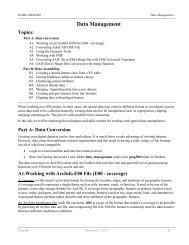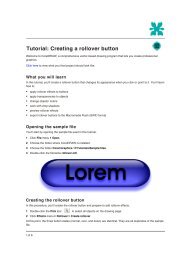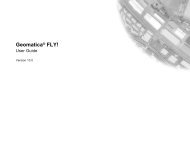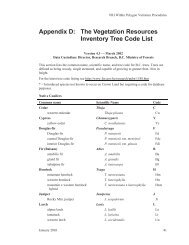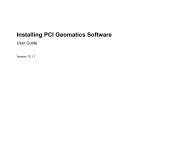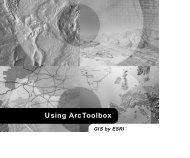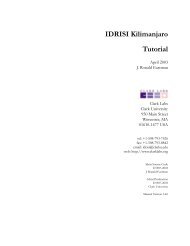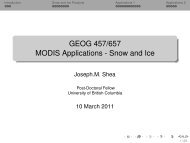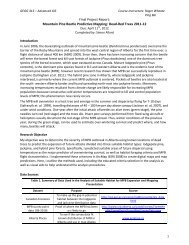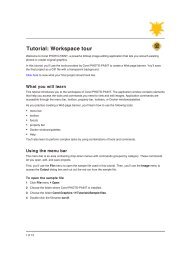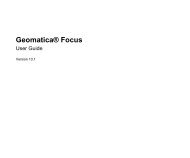Understanding Map Projections
Understanding Map Projections
Understanding Map Projections
You also want an ePaper? Increase the reach of your titles
YUMPU automatically turns print PDFs into web optimized ePapers that Google loves.
MCBRYDE–THOMAS FLAT-POLAR QUARTIC<br />
LIMITATIONS<br />
Useful only as a world map.<br />
USES AND APPLICATIONS<br />
Thematic maps of the world.<br />
The central meridian is 0°.<br />
DESCRIPTION<br />
This equal-area projection is primarily used for world<br />
maps.<br />
PROJECTION METHOD<br />
A pseudocylindrical equal-area projection in which<br />
all parallels are straight lines and all meridians,<br />
except the straight central meridian, are equally<br />
spaced, fourth-order (quartic) curves.<br />
LINEAR GRATICULES<br />
All parallels are unequally spaced straight lines that<br />
are closer together at the poles. The poles are<br />
straight lines one-third as long as the equator. The<br />
central meridian is a straight line 0.45 times as long<br />
as the equator.<br />
PROPERTIES<br />
Shape<br />
Shapes are stretched north–south along the equator,<br />
relative to the east–west dimension. This stretching<br />
decreases to zero at 33°45' N and S at the central<br />
meridian. Nearer the poles, features are compressed<br />
in the north–south direction.<br />
Area<br />
Equal area.<br />
Direction<br />
Distorted except at the intersection of 33°45' N and S<br />
and the central meridian.<br />
Distance<br />
Scale is distorted everywhere except along 33°45' N<br />
and S.<br />
Supported map projections• 69




